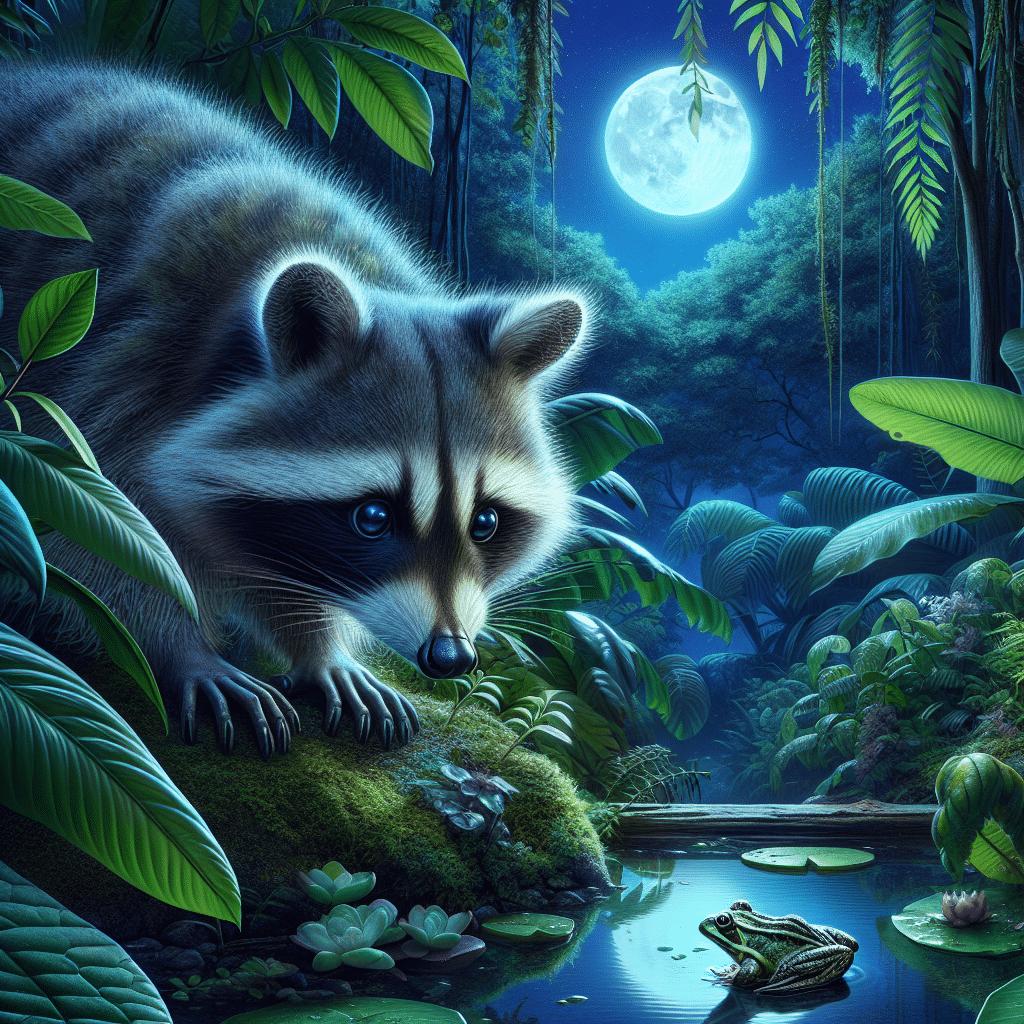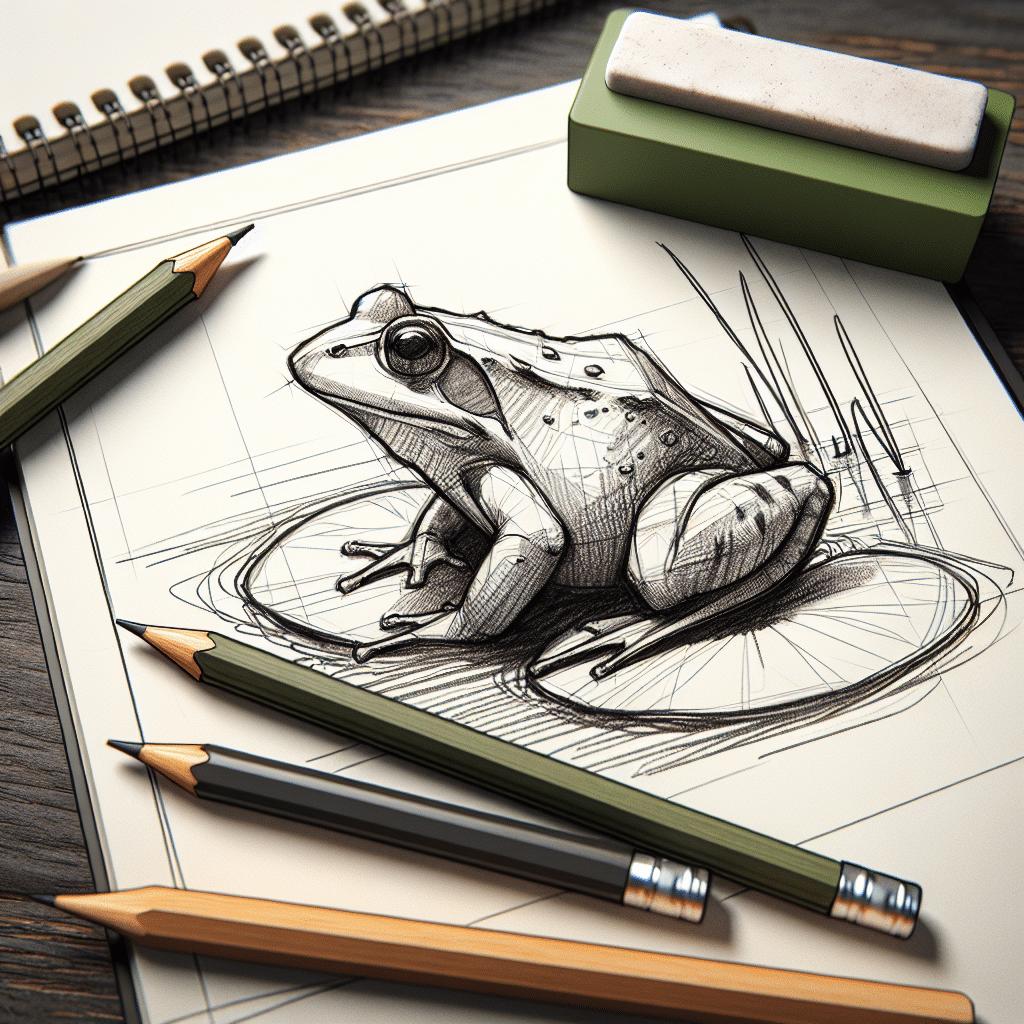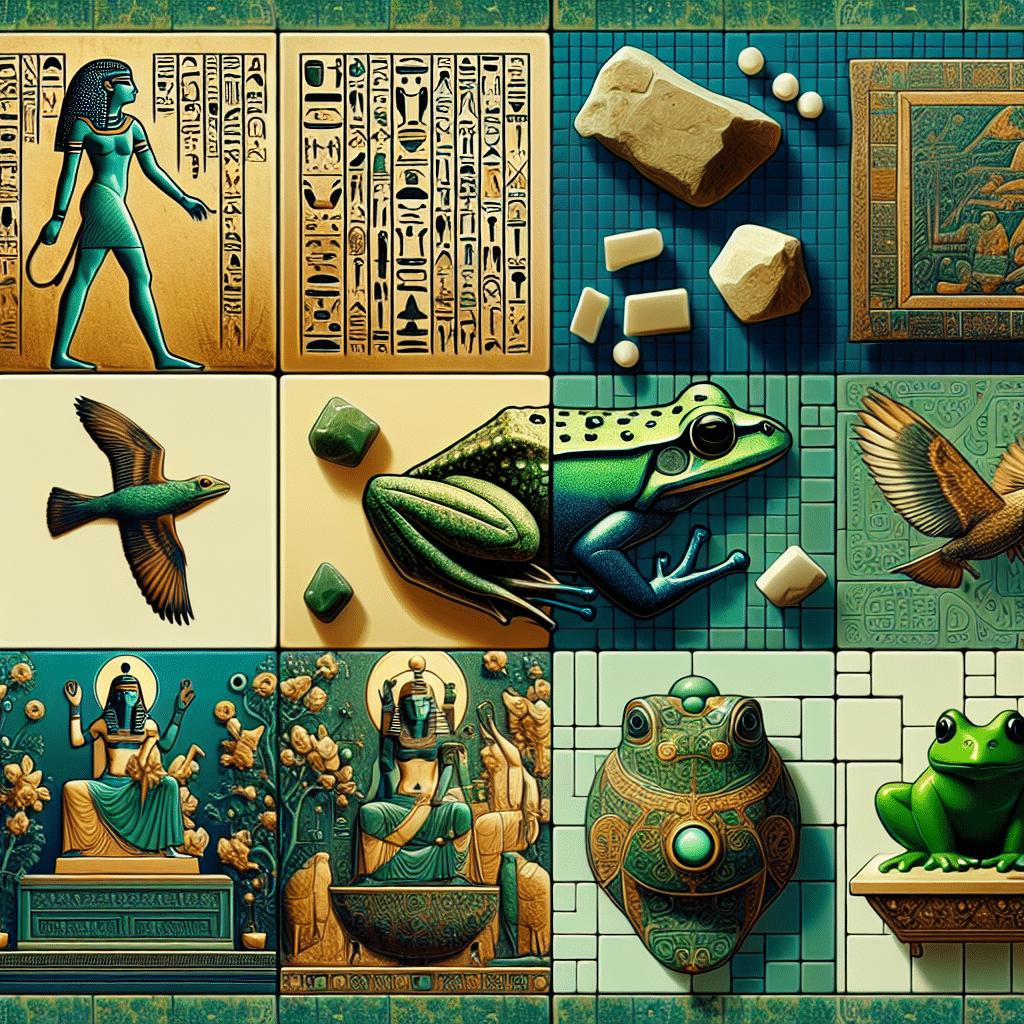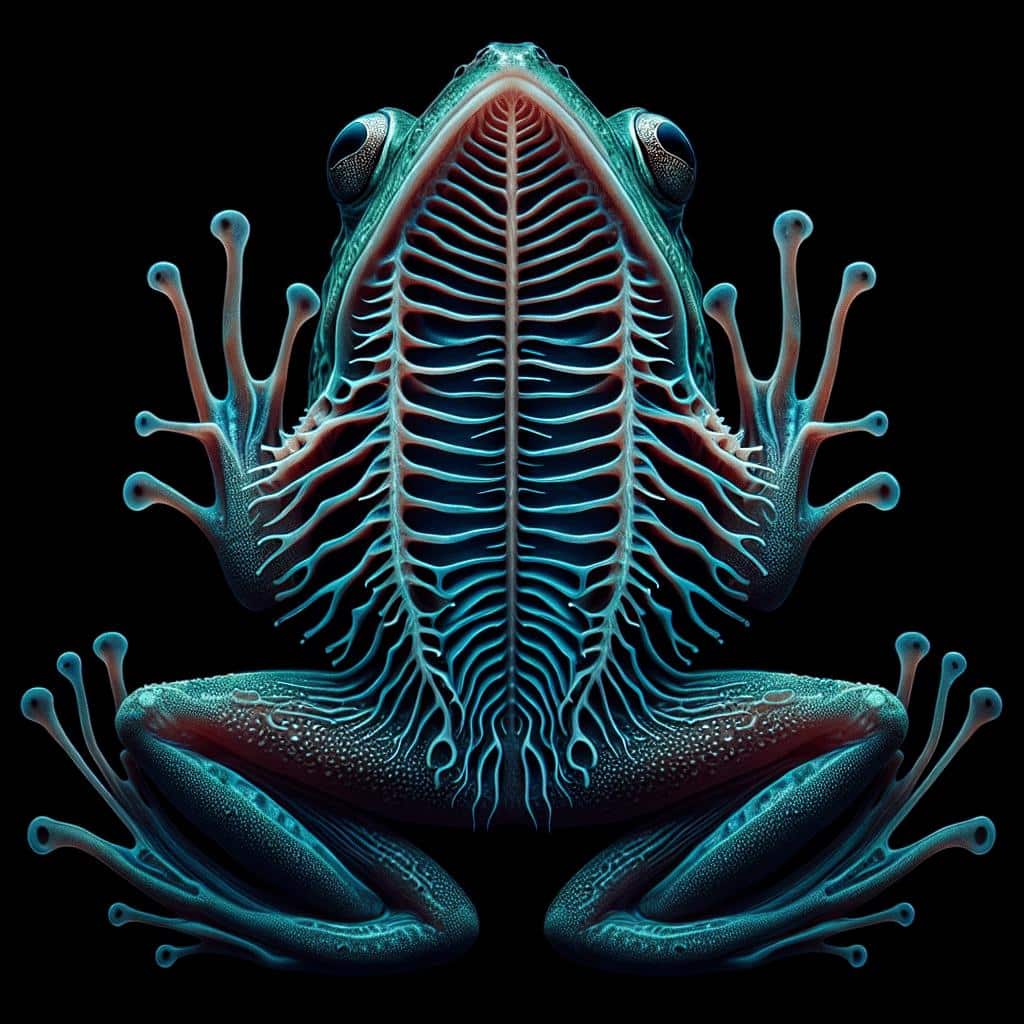You might find yourself wondering about the varied diet of those clever, masked bandits known as raccoons. Now, think about the humble frog, ribbiting away in a pond; does it ever become a snack for the nocturnal forager? The answer is yes, raccoons do eat frogs. They aren’t picky eaters and their opportunistic dining habits often lead them to water sources where frogs make for a convenient, protein-rich meal. While raccoons are omnivores and will munch on a wide array of foods, from fruits to fish, the amphibian appetizer is certainly on their menu. So next time you’re gazing at a pond and spot a raccoon, chances are it might just be on the hunt for its next froggy feast.

Understanding Raccoon Diets
Overview of Raccoon Feeding Habits
When you’re curiously observing the bustling nocturnal activities of raccoons, you might wonder, what exactly are these critters munching on? Raccoons are not very picky about their meals. Their feeding habits are quite varied and they’re known for being quite the scavengers. They’ll happily rummage through your garbage cans, but in a more natural setting, they’ll forage for a range of food items, from fruits and nuts to small animals.
Omnivorous Nature of Raccoons
As opportunistic eaters with an omnivorous diet, raccoons will eat just about anything that’s accessible and satisfies their nutritional needs. Their diet includes insects, eggs, birds, fish, and yes, they do munch on frogs when they get the chance. They’re also known to eat fruits, vegetables, nuts, and seeds, reflecting the true variety of an omnivore’s menu.
Seasonal Diet Variations of Raccoons
Your masked neighbors adapt their diets based on availability and the season. In spring and summer, they feast on more insects and fresh fruits. During fall, raccoons shift focus to nuts and acorns, fattening up for the winter. When the cold hits, their diet depends heavily on what they can get their paws on, which often means scavenging for human leftovers or catching whatever small prey they can find.
Impact of Habitat on Raccoon Food Choices
Your location greatly influences what a raccoon will eat. Those inhabiting forests and rural areas have a diet consisting of more natural food sources, while urban raccoons, well, let’s just say they enjoy the plethora of options your garbage bins provide.
Raccoons in the Wild vs Urban Environments
Dietary Differences Between Urban and Rural Raccoons
In the great outdoors, raccoons tend to eat more amphibians, insects, and plants, while their city counterparts have adapted to consume more human food waste, pet food, and anything else they can rummage from your trash.
Adaptations of Raccoons in Urban Settings
Raccoons in urban settings are the real MacGyvers. They’ve learned to navigate the concrete jungle, using their dexterous paws to open bins, doors, and even windows to access food. They’ve become night-time bandits known for their cleverness and adaptability.
Availability of Food Sources in Different Habitats
The availability of natural food sources is sparse in the city, but raccoons make do with the abundance of waste humans leave behind. In contrast, wild raccoons have a plethora of natural resources at their disposal, yet urban raccoons don’t seem to mind their adapted menu one bit.

The Role of Amphibians in a Raccoon’s Diet
Importance of Frogs and Toads for Raccoons
So, do raccoons eat frogs? Absolutely. Frogs and toads are an important part of a raccoon’s diet, particularly when other food sources might not be abundant. These amphibians provide a good source of protein and are usually abundant in the wild, making them a convenient snack.
Nutritional Value of Frogs for Raccoons
Frogs are packed with nutrition and make for a healthy meal, providing the necessary protein for energetically intensive activities, such as foraging, climbing, and well, more foraging.
Raccoons’ Hunting Techniques for Capturing Amphibians
Raccoons are skilled hunters, particularly when it comes to amphibians. They rely on their keen sense of touch and excellent hand-eye coordination to locate and capture these slippery creatures.
Raccoons’ Feeding Behavior
Nocturnal Foraging Patterns of Raccoons
You’re not likely to spot raccoons on a food hunt during the day; these creatures are nocturnal. They use the cover of night to search for food, which helps them avoid predators and increases their odds of stumbling upon various food sources that rest in the stillness of the night.
Flexibility and Opportunism in Feeding
Their feeding behavior is characterized by flexibility and opportunism. Raccoons are always ready to switch up their menu, based on what’s available. Whether it’s a sudden surge of crayfish in the creek or an unattended picnic basket, they’ll take their fill.
Use of Sensitive Paws in Locating Prey
Raccoons have highly sensitive paws that are especially handy for locating prey in murky waters. These nimble digits are precise enough to detect and grab a frog hiding under the pond’s surface without even seeing it.

Predation Impact on Frog Populations
Raccoons as Predators in Ecosystems
Within their ecosystems, raccoons play the role of predator. By hunting frogs and other small creatures, they help maintain a balance within their environment, ensuring no single species becomes too dominant.
Effects of Raccoon Predation on Amphibian Species
However, the predation of frogs by raccoons can significantly impact amphibian populations. In certain areas, a high density of raccoons has been linked to declines in local amphibian species.
Conservation Concerns for Amphibians
This impact raises conservation concerns for amphibians. Certain measures, such as habitat restoration and controlling raccoon populations in vulnerable areas, may be necessary to ensure the survival of various amphibian species.
Human Influence on Raccoon Diets
The Effect of Trash and Human Waste on Raccoon Feeding
Raccoons have a reputation for getting into trash, and human waste undeniably shapes their diet in urban settings. Easy access to food scraps means raccoons can spend less time hunting, which might sound great for them, but it can lead to overpopulation and increased human-wildlife conflicts.
Impact of Human Intervention in Natural Habitats
Human intervention doesn’t always come in the form of trash. Habitat destruction can force raccoons to relocate and alter their diets, relying more heavily on whatever food sources are available in their new urban environments.
The Role of Pet Food in Urban Raccoon Diets
And let’s not forget your pet’s food. Unsecured pet food bowls outside your home are like a dinner invitation for raccoons. They’re not shy to grab a free meal, posing a nuisance for pet owners and a significant alteration to their natural foraging habits.
Ecological Significance of Raccoon Predation
Raccoons as Keystone Species
Surprisingly, raccoons can be considered keystone species in certain ecosystems. By preying on abundant species like frogs, they help keep these populations in check, inadvertently supporting the variety of life that makes up a healthy ecosystem.
Balancing Ecosystems: Raccoons’ Role in Controlling Frog Populations
Through their role in controlling frog populations, raccoons can indirectly maintain the balance of vegetation and other animal species. Frogs are known to be significant consumers of insects; with their numbers kept in line by raccoons, plants and other animals might thrive.
Interaction with Other Predators and Scavengers
Raccoons also intersect with other predators and scavengers in the food web. When raccoons feast on a carcass or leave remnants of their meal, they provide opportunities for other scavengers to eat. This interplay underscores the complexity of food chains and the importance of each species in maintaining the ecological balance.
Raccoon Predation Techniques
Hunting Strategies for Amphibious Prey
Raccoons employ various strategies when hunting amphibious prey. They might quietly stalk the water’s edge or use their paws to probe for critters. If a frog leaps away, the raccoon’s agility and speed come into play as it gives chase.
Washing Food: Myth vs Reality in Raccoon Behavior
You might have heard that raccoons ‘wash’ their food before eating. While it’s a common misbelief, raccoons are actually dipping their food in water to soften it or remove unwanted parts. Their so-called ‘washing’ is more about enhancing their tactile experience and less about cleanliness.
Climbing and Swimming Abilities in Prey Capture
Don’t underestimate the raccoon — these creatures are adept at both climbing and swimming, which prove invaluable when hunting for frogs. They can scale a tree or dive into a pond with ease, making them versatile predators.
Raccoons as Carriers of Parasites and Diseases
Risks of Raccoon-Frog Interactions to Ecosystem Health
As raccoons feast on frogs, they may also become carriers of diseases and parasites, which can be transferred to other animals or even to humans. This relationship further complicates their role in the ecosystem and the potential for disease transmission.
Common Diseases and Parasites transmitted by Raccoons
Raccoons can carry rabies, roundworm, and other harmful pathogens. Their interaction with frogs and other prey can facilitate the spread of these diseases, raising concerns for wildlife health and the need for monitoring and management.
Implications for Wildlife and Human Health
The diseases and parasites that raccoons carry, can have serious implications for both wildlife and human health. Effective trash management and keeping raccoons at a distance from human dwellings are important measures to mitigate these risks.
Observing and Studying Raccoon Behavior
Techniques for Monitoring Raccoon Diets in the Wild
If you’re curious about what raccoons in the wild are eating, scientists use various techniques to monitor their diet. From analyzing scat to observing feeding behaviors directly, researchers aim to understand the dietary habits of these adaptable creatures.
The Use of Camera Traps and Other Technology
Technology like camera traps has revolutionized the study of raccoon behavior. These tools allow scientists to capture footage of raccoons in their natural habitat without human interference, providing insights into their eating patterns and social behaviors.
Contributions of Citizen Science to Understanding Raccoon Diets
Lastly, citizen science has become a valuable asset in studying raccoon diets. Through community reporting and involvement in monitoring projects, the public can contribute to our understanding of raccoon ecology and help manage their populations responsibly.



